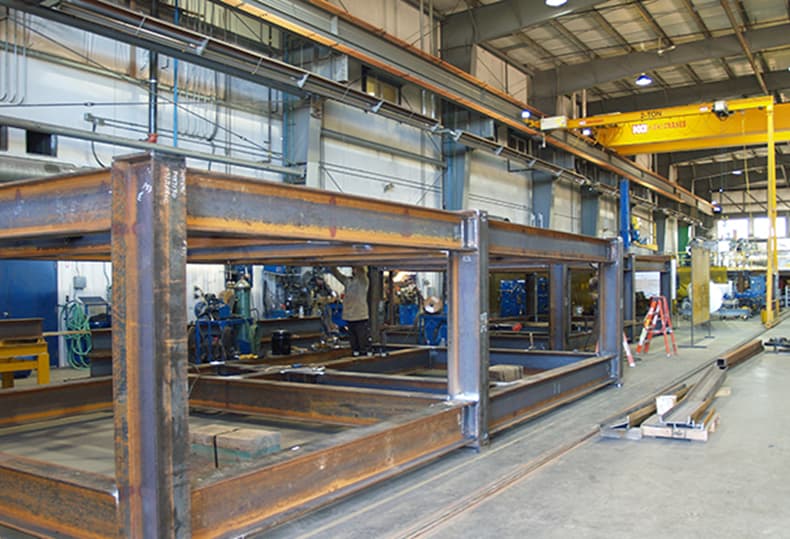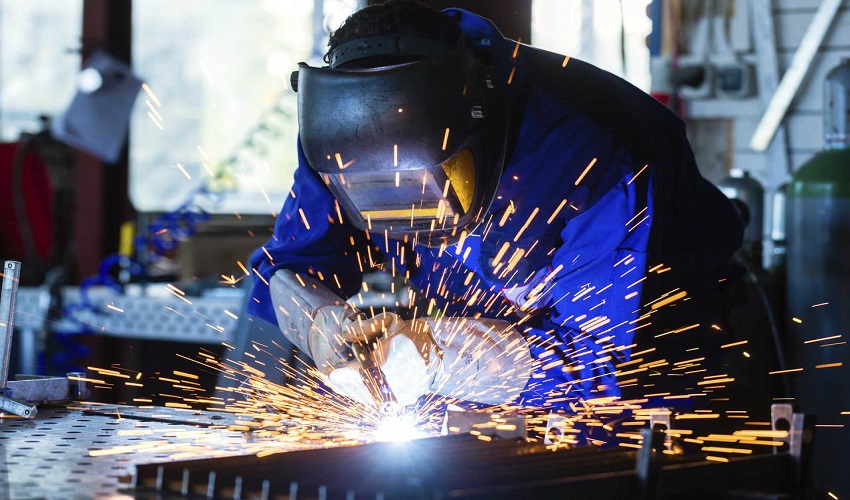Trustworthy Steel Fixing Solutions: Making Sure Architectural Stability
Trustworthy Steel Fixing Solutions: Making Sure Architectural Stability
Blog Article
Ingenious Patterns in Steel Manufacture: Enhancing Sturdiness and Precision
In the world of steel fabrication, the quest of longevity and accuracy has resulted in a wave of cutting-edge patterns that are reshaping the industry. From developments in welding innovations to the assimilation of robotic automation in construction processes, the landscape of steel production is advancing swiftly. High-strength alloy advancement, combined with the utilization of 3D modeling and simulation software program, is pushing the boundaries of what is attainable in regards to structural stability and precision. The growing emphasis on lasting methods in steel manufacturing is not only driving performance yet additionally cultivating an extra eco conscious method to manufacture. These fads are not just forming today yet also laying the foundation for the future of steel fabrication, promising additional improvements in toughness and precision.
Advanced Welding Technologies
In the realm of steel construction, the fostering of cutting-edge welding technologies has actually significantly transformed the sector's approach to accomplishing exceptional quality and accuracy in architectural welds. Advanced welding innovations, such as laser beam welding and friction stir welding, have become game-changers in the area. Laser light beam welding utilizes a focused laser beam to join steel components with amazing precision and rate, making it excellent for thin products and complex styles. On the other hand, rubbing stir welding produces exceptionally strong bonds by mechanically intermixing the molecules of the materials at the joint, removing the demand for thawing the metal. These technologies offer countless advantages, including reduced heat-affected areas, very little distortion, and enhanced mechanical residential properties in the welded joints. By leveraging these advanced welding strategies, steel producers can elevate the longevity, stamina, and precision of their architectural welds, satisfying the increasingly requiring requirements of modern-day building and construction projects.
Robotic Automation in Manufacture
Embracing robotic automation has actually come to be a cornerstone of contemporary steel manufacture practices, improving procedures and boosting performance throughout the industry. Robots are reinventing the means steel components are manufactured, providing unparalleled precision and speed while reducing human error. These automated systems can manage recurring tasks with regular precision, leading to higher quality end products.
One secret advantage of robotic automation in steel fabrication is the ability to function around the clock without exhaustion, dramatically enhancing manufacturing result. This continuous operation reduces downtime and increases task timelines, eventually conserving costs for makers. In addition, robotics can be set to execute complex jobs that might be harmful or tough for human employees, boosting safety and security in the workplace.
Additionally, robotic automation enables smooth combination with other electronic modern technologies, such as computer-aided design (CAD) software program and Internet of Things (IoT) systems (steel fabrication melbourne). This interconnected technique boosts communication in between various stages of construction, enhancing workflows and making certain real-time surveillance and control. As the steel fabrication market remains to evolve, robotic automation stands out as a transformative force driving performance and accuracy in manufacturing processes

High-Strength Alloy Advancement
The advancement of high-strength alloy development in steel construction is improving the industry's strategy to enhancing product toughness and efficiency. High-strength alloys are crafted to exhibit premium mechanical residential properties, such as raised tensile strength, strength, and deterioration resistance contrasted to traditional steel grades. By incorporating these innovative alloys right into fabrication procedures, suppliers can create components that endure greater tension levels and severe environments, causing more reliable and durable final product.
One trick advantage of high-strength alloy advancement is the capacity to lower product density without endangering architectural stability. This not only leads to lighter-weight elements yet also adds to set you back financial savings and improved effectiveness in fabrication and setting up procedures. Furthermore, the enhanced strength-to-weight ratio of these alloys enables for the layout and building and construction of structures with higher load-bearing abilities while reducing total weight.
3D Modeling and Simulation Software
Improvements in steel manufacture procedures have been significantly view it now pushed by the assimilation of sophisticated 3D modeling and simulation software devices. These tools enable makers to develop thorough virtual models of their projects, enabling them to visualize the final item with accuracy prior to any kind of physical job starts.

Lasting Practices in Steel Production
Including sustainable techniques into steel manufacturing processes is crucial for lessening ecological effect and making certain long-lasting source availability. One vital sustainable method is the fostering of energy-efficient technologies to minimize greenhouse gas exhausts during the steel production procedure. This includes utilizing eco-friendly energy sources, such as solar or wind power, to power steel plants and applying energy-efficient equipment to enhance power use.
Another vital aspect of sustainable steel production is the liable sourcing of resources. This entails ensuring that the iron ore and other resources made use of in steelmaking are gotten from ethical and ecologically pleasant sources. By advertising openness in the supply chain and sticking to rigorous environmental standards, steel makers can decrease the adverse impacts of resource extraction on regional environments and areas.

Conclusion
To conclude, the cutting-edge patterns in steel fabrication such as advanced welding modern technologies, robotic automation, high-strength alloy development, 3D modeling and simulation software program, and lasting methods are enhancing the longevity and accuracy of steel products. These innovations are changing the steel construction industry by enhancing top quality, effectiveness, and sustainability. It is clear that the future of steel construction hinges on accepting these sophisticated innovations to fulfill the demands of modern-day building and construction and imp source production industries.
In the world of steel fabrication, the quest of durability and accuracy has actually led to a wave of ingenious fads that are reshaping the sector.In the realm of steel construction, the adoption of cutting-edge welding technologies has actually considerably changed the industry's technique to attaining exceptional top quality and accuracy in structural welds. As the steel construction sector continues to develop, robot automation stands out as a transformative pressure driving efficiency and precision in producing procedures.
Furthermore, recycling and recycling steel scrap and waste products play a significant function in improving the sustainability of steel manufacturing. steel fabricators melbourne.In final thought, the cutting-edge fads in steel fabrication such as advanced welding innovations, robotic automation, high-strength alloy advancement, 3D modeling and simulation software program, and lasting techniques are boosting the durability and precision of steel products
Report this page